Content
- 1 Stretching types
- 2 The benefits of stretching
- 3 Stretching for children: benefit or harm
- 4 Is stretching good for pregnant women
- 5 Does stretching help you lose weight?
- 6 How to stretch properly
- 7 Stretching exercises for beginners
- 8 When is the best time to stretch
- 9 Why Stretch After Workout
- 10 How many times a week to stretch
- 11 Who is contraindicated to do stretching
- 12 Conclusion
The popularity of strength and cardio training is growing every day, and many are aiming to increase muscle tone and build mass, forgetting about other components of a well-trained body - preparedness for stress and lack of muscle soreness. Muscle stretching (or stretching) is a unique type of exercise for developing a person's flexibility. Knowing what the benefits and harms of stretching are, will help you effectively apply it in an individual load system.
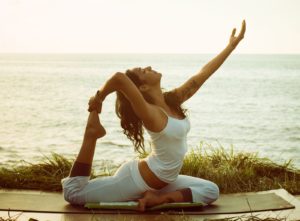
Stretching types
Before you start to practice stretching and choose the optimal training program, you need to understand the types and properties of stretching.
- Static stretching... This type of stretching is one of the most common among yoga and strength sports enthusiasts. The main task is to stretch the muscle fibers to the maximum and hold the pose for about 20 - 30 seconds. This type of stretching has the useful property of directing all the main load on the muscles, tendons and joints, so a person should have a feeling of smooth stretching. Static stretching will be especially useful when practicing splits and other gymnastic stances.
Important! In order to avoid harm to injuries, in no case should you allow pain.
- Passive stretching... In terms of technique, passive stretching is similar in properties to static. However, this will require the presence of a trainer or partner who will gently physically affect the trainee's body. To be effective in stretching the muscles, the performer should breathe deeply.
- Dynamic stretching... It is characterized by controlled movements of the limbs - both slow and fast. Dynamic stretching has the beneficial effect of improving blood circulation in muscle fibers, thereby preparing the body for the upcoming stress. And in combination with a warm-up, stretching can work out those parts of the body that will be the most stressed.
- Ballistic stretch... Unlike dynamic, it is characterized by uncontrolled body movements in space. This type of stretching is considered a rather dangerous training option and is used in the field of martial arts. At the initial stage of stretching practice, it is not recommended to use the ballistic stretching technique, so as not to harm the muscles that have not yet been prepared and the body as a whole.
- Active stretching... During its execution, individual muscles of the body stretch, which is beneficial to warming them up both before and after the exercise. The properties of this technique will be especially useful in reducing the load on the joints, in increasing the range of mobility, and the elasticity of muscle fibers. For an active type of stretching, it is recommended to use a clothesline, a jump rope, an elastic bandage, a belt or a regular belt: with their help, you can independently train the necessary parts of the body.The technique involves holding a certain position due to the strength of the muscles, without any additional help. The tension of certain types of muscles during stretching helps to relax the antagonist muscles through mutual balancing.
- Isometric stretch... It implies alternating relaxation with tension. The most common example is twine: when a person takes the appropriate posture and lowers slightly, until a slight pain, and then strains the leg muscles in such a way as if he wants to rise - and holds in this position for about 20 seconds, after which he relaxes again and falls even lower.
- Proprioceptive neuromuscular stretching... To do this, you need the help of a coach or partner. The bottom line is the maximum contraction of the muscle, after which its statistical stretching is performed. It is important to remember that the stretched muscle must be allowed to rest for 15 to 20 seconds before performing the next approach - this will allow it to relax a little and prevent injury from injury.
The benefits of stretching
To begin with, you should pay attention to the differences between stretching and other "practice on the mat": yoga and Pilates. The yoga technique is aimed at immersion in your consciousness by finding balance between the body and the inner "I". The beneficial properties of Pilates are manifested in strengthening the back muscles and improving coordination of movements. Stretching has a more voluminous effect on the body: it is used both in medical practice and in professional acrobatics.

Benefits of Regular Stretching Practices:
- Improving the Effectiveness and Benefits of Core Workout... Stretching improves muscle strength by allowing you to complete sets with sufficient amplitude.
- Acceleration of muscle fiber recovery... One of the most beneficial properties of stretching is to prevent the appearance of pain in muscle fibers and significantly accelerate their recovery after intense exercise, while improving the flow of oxygen and blood. Stretching promotes active nutrition of elastic muscles, activates their growth.
- Increased endurance... Numerous studies have shown that intense stretching of muscle fibers (even without any additional strength loads) can significantly increase strength and endurance indicators.
- Reducing the risk of injury while exercising... Stretching your muscles is invaluable in preventing harm from muscle sprains, joint and tendon injuries, and during the workout itself. Such beneficial properties are actively used in many sports.
- Relief of painful sensations in the back... Back pain (especially in the lower part) is one of the most common problems in the life of many athletes. It occurs due to the low flexibility of the spinal column, it causes great discomfort and harm to the functioning of the musculoskeletal system. Regular stretching exercises can help eliminate this problem and improve the flexibility of the spine.
- Toning the musculoskeletal system... The benefits of stretching for the muscles of the spine are to get rid of all "clamps" and maintain the correct position of the entire human skeleton.
In addition, you can learn about the benefits and dangers of stretch marks, about its properties and effects on the body from the video:
The benefits of stretching for women
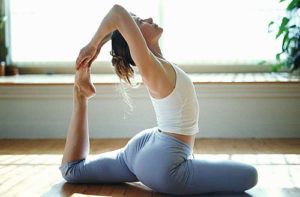
- Develops muscle elasticity, promotes joint health. In the course of the research, scientists found out: after 30 years, the flexibility of the female body decreases significantly. Regular stretching practice helps to keep the muscles elastic and significantly improve coordination and body flexibility.
- Stretching is especially beneficial for girls and women in developing an easy gait and forming an even and beautiful posture - due to the properties of muscle stretching, relieve the feeling of stiffness and tightness.
- Improves the menstrual cycle. It has been proven that girls who daily practice stretching tolerate menstruation much more easily and practically do not suffer from the symptoms of premenstrual syndrome. One of the most beneficial properties of stretching is to improve blood circulation in the uterus, which is the strongest muscle in a woman's body.
- Relieves stress and clamps. These properties of stretching will be useful in getting rid of the muscle corset and associated nervous tension. Thus, static stretching combined with calm music will be beneficial after a hard day at work.
- Bringing the body into shape. Stretching is used with benefit in getting rid of the harm of cellulite, which has an unpleasant effect on the figure and women's health. The main zones of its occurrence are the abdomen and inner thighs. With regular stretching of these areas, the result will be noticeable after a few weeks: the muscles will become more toned, and the orange peel will disappear.
- Stretching properties will also be useful in normalizing bowel function. The metabolism improves, because of which the skin begins to look healthier, and the extra pounds gradually "run away".
Why stretching is useful for men
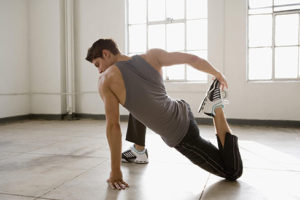
The main benefit of stretching for men is to increase the effectiveness of strength training, in which the muscles become stiff and lose elasticity. This increases the harm of injury and negates the effectiveness of training.
- Stretching prevents overstraining of muscle fibers and helps to properly distribute high loads throughout the body.
- Stretching during strength training helps to relieve pain in the back and form the correct position of the spine.
- The increase in blood flow after stretching significantly accelerates the supply of oxygen and nutrients to the tissues.
- Stretching develops the property of body resistance to physical exertion: relaxation of the ligamentous and articular apparatus will be useful for preparing tendons, increasing their endurance, reducing the risk of harm from injury, increasing the amplitude and range of motion of the joints.
Stretching for children: benefit or harm
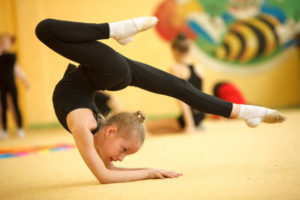
Many parents are worried about the fact that almost all professional gymnasts suffer from disorders of the musculoskeletal system. That is why some are so afraid to include the practice of stretching in their child's physical education, fearing to harm the still unformed child's body.
Indeed, regular stretching to the limit of possibilities, which gymnasts practice, can lead to problems with the functioning of the motor system: joints wear out quickly, creating the most favorable conditions for the development of osteochondrosis and a number of other diseases.
However, if gymnastics or choreography is practiced based on the child's wishes and if such activities bring him pleasure, then moderate stretching training will only benefit the child's body.
It will help to normalize the muscle tone of the child, strengthen and align the posture; relieve tension, thereby activating the corresponding brain structures, which ultimately will benefit the developing psyche.
Therefore, do not be afraid that stretching can harm the child's body - it is only important to choose the right set of exercises based on the wishes of the baby.
Is stretching good for pregnant women
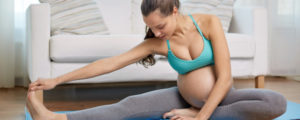
Many women are afraid of stretching during pregnancy, but it is during this period that the benefits of stretching for women's health become invaluable support in a special period of life. It is important to note that stretching is the basis of expectant mothers' workouts.
- The development of flexibility and elasticity of the joints eliminates weight gain during pregnancy.
- By strengthening the muscles, the load on the back and hamstrings is significantly reduced.
- Regular stretching practice during pregnancy can help prevent stretch marks after the baby is born.
However, before including such a practice in her training, the expectant mother should remember about some rules that will help not to harm the child's body:
- Stretching during pregnancy can be performed in absolutely any order, but it is very important to do a preliminary warm-up;
- Classes should be done with moderate stress. The duration of holding the pose should vary within 8 - 10 seconds;
- Do not perform more than three repetitions of one exercise;
- It is very important to avoid pain during exercise. The exception is lumbar pain, which in this case may signal the effectiveness of the exercise;
- The greatest benefit for pregnant women is static stretching, which excludes any sudden movements;
- Exercise is allowed only if the woman is in good health.
Stretching the legs is especially beneficial in pregnancy: studies have shown that pregnant women who practice splits have the lowest risk of perineal laceration during childbirth.
Does stretching help you lose weight?
As with most physical exercise, stretching can cause immediate weight loss. With its help, the main muscles are worked out, and the figure takes on a more toned appearance.
Stretching's ability to improve blood flow thus stimulates active fat burning. However, stretching alone is not able to build an ideal figure, especially in the case of extra pounds. The best option would be to combine it with proper nutrition, diet, drinking plenty of water and an active lifestyle.
How to stretch properly
Despite all the useful properties of stretching, when performing it, you must follow the basic rules:
- It is important to warm up the muscles before training, as stretching without a preliminary warm-up can lead to injuries.
- In the process of doing the exercises, you should not hold your breath, as it plays a significant role in the process of relaxing the body. Breathe at a normal pace, through your nose or mouth.
- No need to rush. Long and quiet stretching is much better at reducing muscle stiffness and tension.
- Studying in a group of people, it is very important not to compare yourself with others: each person has his own level of flexibility: trying to "catch up" with another, you can easily harm your own body.
- Be sure to monitor the intensity of the exercise, as well as avoid sudden movements. Forceful effects on the muscles lead to their tension, thereby reducing the effectiveness of the stretching itself and provoking the onset of painful sensations.
Stretching exercises for beginners
Stretching beginners should be fairly easy to do. You should start with simple and comfortable positions for the body, gradually increasing the load. Let's consider some of them:
- Exercise for the back "Cat"... To perform it, you need to get on all fours, and then smoothly bend your back: first up, then gently move down, fixing in each position for about 4 to 6 seconds.
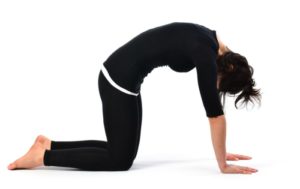
- Stretching the buttocks... To do this, lie on your back and smoothly pull one leg to your chest, trying to keep it as straight as possible. After fixing the position for 4 - 5 seconds, repeat the action with the second leg.
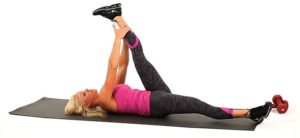
- Stretching the calf muscles... While in a standing position, you need to lunge with your leg, while bending it at the knee. It is important to watch your feet: they should be as close to the floor as possible. After that, repeat the same with the other leg.
- Stretching the front of the thigh... Having taken an upright position, bend your knee and pull it towards the buttock.Repeat with the other leg.
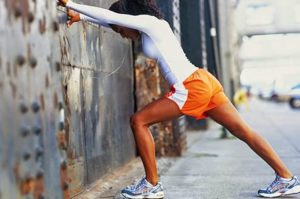
- Stretching the chest... To perform it, you must join your hands behind your back in a lock and try to raise them up in this position. Another useful exercise is to stand up straight with your back straight. Cross your arms in front of you with a lock and gradually stretch your body up.
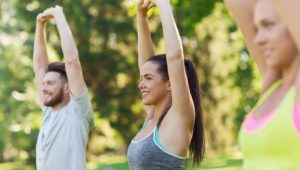
- Lateral thigh stretch... While in a seated position, you need to bend your knee and take the other to the side. After that, tilt to the side, and then repeat the same from the opposite side.
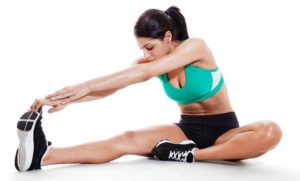
For the initial stage, such a complex will be quite enough. When the workout feels like it’s easy to do, you can gradually incorporate new exercise options into the program, with more stress.
When is the best time to stretch
The best times to stretch are before and after your workout. The property of stretching to actively warm up the muscles, preparing them for the upcoming load, will be useful before starting a workout.
After a workout, stretching, on the other hand, relieves excess tension, providing a healing and relaxing effect on muscle fibers.
Why Stretch After Workout
The benefits of stretching after exercise are based on the property of proprioceptors (special Golgi corpuscles), which are located in areas of muscles and ligaments, to relax the stretched muscle. This has a beneficial effect on the development of flexibility and elasticity of the muscle spindles.
How many times a week to stretch
It's always important to remember that muscles take time to adapt and recover. You do not need to be zealous and drag on several times a day - such excessive efforts can not only fail, but also cause serious harm to the body. Stretching once a day is the best option.
Who is contraindicated to do stretching
Despite all the benefits of stretching, not everyone can use it. Stretching is strictly prohibited in the following cases:
- after injuries and fractures: stretching puts stress on both the skeletal muscles and the skeletal system, which can provoke repeated damage;
- with serious inflammation and chronic diseases of the joints;
- diseases of the muscular system and spine;
- problems of the cardiovascular system;
- hypertension;
- pain during exercise.
Conclusion
The benefits and harms of stretching continue to be actively studied by experts in the field of sports activities. However, it has already been proven that the properties of stretching have a beneficial effect on muscle flexibility, the formation of correct posture, getting rid of pain, and are also especially valuable during pregnancy. Subject to the rules of implementation and taking into account contraindications, the health benefits of stretching are unique.

